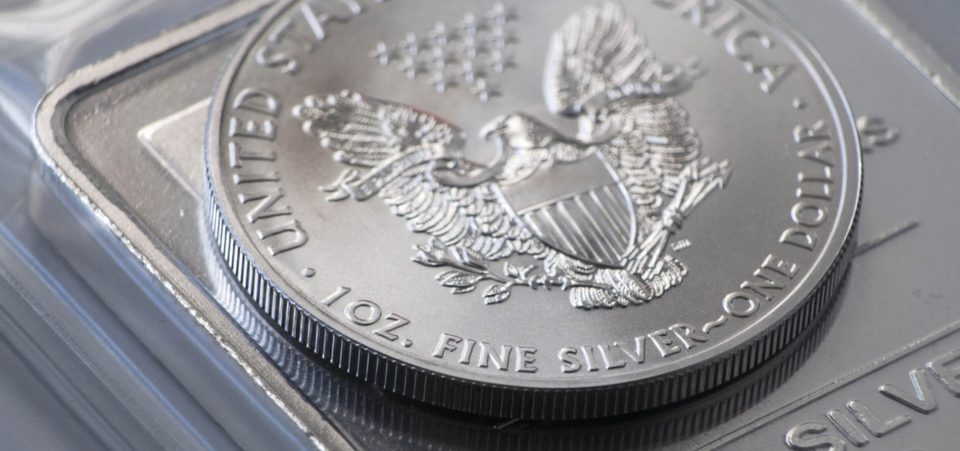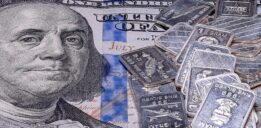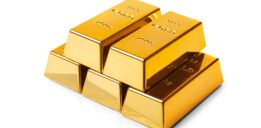Silver Price Trends 2017
Those who invest in precious metals like silver and gold may be wondering what’s happening to their gains in 2017. Since the start of March, silver prices have fallen more than eight percent to around $16.90 per ounce; erasing gains made over the last 30 trading days. The culprit…February’s rosy jobs data bolstered the case for additional interest rate hikes this year. But it’s quite possible that the February jobs data was a little too good, and unemployment figures in March and April could make silver a great play for precious metal bulls.
Silver and gold prices have been falling since the beginning of March, silver prices are down more than eight percent since hitting a three-month-plus high of $18.54 in late February. Over the same time, gold prices have retreated 4.5% to around $1,200 per ounce.
Precious metals are facing pressure after robust U.S. jobs data suggested the U.S. economy is picking up steam. It also paved the way for a rate hike in March.
The U.S. economy added 235,000 jobs in February as employment fell to 4.7%. Analysts were predicting the U.S. economy would create around 200,000 and the jobless rate would fall to 4.7%. (Source: “Employment Situation Summary,” U.S. Bureau of Labor Statistics, March 10, 2017.)
One of the areas that experienced the greatest growth was construction. In February, 58,000 construction jobs were created, in a sector that’s slowing. Over the last six months, 177,000 construction jobs have been filled. But are the markets bullish on data that might be a little too rosy?
It is widely believed that unseasonably warm weather helped skew the February jobs data, which, if true, could set up underwhelming numbers in March, April, and even May. Is there any merit to the idea?
On the surface, yes. The average temperature in February was 41.2°F; the norm is 34.5°F. On top of that, just 184,000 stayed home from work because of bad weather in February; that’s half the February norm of 365,000. If more normal weather patterns were in place, it is estimated that February payroll gains would have been just 55,000. (Source: “Is the Federal Reserve Using Overheated Data?” Barrons, March 11, 2017.)
The strong jobs data virtually assures the Fed will raise its key lending rate when it next meets on March 15. But will it be premature and based on economic data that might not be entirely accurate? It has happened before.
Silver Prices Popped and Stocks Tripped on Weak Q4 Soybean Data
This isn’t the first time an anomaly has helped U.S. economic data to the upside. Back in November, the Department of Commerce said that the U.S. economy grew faster than expected, advancing at an annualized rate of 3.2%. This was the best performance in two years and beat the forecast growth rate of 2.9%. (Source: “Gross Domestic Product Third Quarter 2016 (second estimate),” Bureau of Economic Analysis, November 29, 2016.)
BUT, the acceleration was due in large part to an increase in soybean exports. The increase in American soybeans came after Argentina and Brazil, the two largest producers, experienced a bad harvest. Most people knew the results were temporary, and that Argentina and Brazil would once again have a strong harvest.
Investors, already excited about the Donald Trump victory, were encouraged by the strong GDP data. So too was the Fed, which raised rates in December 2016, for just the second time in 10 years (the first time was back in December 2015).
“Economic growth has picked up since the middle of the year,” said Janet Yellen. “We expect the economy will continue to perform well.” (Source: “Economic growth in 2017 could depend on Trump’s stimulus,” Business Insider, December 15, 2016.)
It didn’t go as well as expected when fourth-quarter GDP data was released in January 2017. U.S. GDP slowed in the fourth quarter to an annualized rate of 1.9%; far lower than the 2.2% economists were looking for. Not surprisingly, exports fell to a rate of 4.3% rate; the biggest drop since the first quarter of 2015. This reverses the 10% increase in the third quarter and comes as a result of cratering demand for American soybeans. (Source: “Gross Domestic Product: Fourth Quarter and Annual 2016,” Bureau of Economic Analysis, January 27, 2017.)
The entirely expected fourth-quarter results sent silver prices higher and tripped up the S&P 500, even if only momentarily. Silver prices rebounded after the announcement, climbing 4.5% over the following three trading sessions to around $17.55 per ounce. The S&P 500, meanwhile, lost more than one percent of its value and it took nine trading sessions before it made up the lost ground, climbing to new record levels.
In the third quarter, soybean demand illustrated, apparently, how strong the U.S. economy was doing. But weak demand in the fourth quarter didn’t quite translate into the reverse.
Silver Price Outlook Bullish as U.S. Economy Remains Fragile
Thanks to warm weather, the U.S. economy is on solid footing and getting stronger. Against a backdrop of so-called strong jobs data, the Atlanta Fed said in its GDPNow forecast that real GDP growth in the first quarter of 2017 is 1.2%; down from its early February forecast of 2.7%. (Source: “GDPNow,” Federal Reserve Bank of Atlanta, March 8, 2017.)
In the fourth quarter, U.S. GDP slowed to 1.9%; full-year GDP came in at 1.6%. The 1.2% figure for the first quarter of 2017 suggests an economy that is stalling, not growing. This is not the kind of healthy labor market the Federal Reserve wants to heap a rate hike on.
And again, we’ve seen this happen before, too. In December 2015, the Fed raised its key lending rate for the first time in a decade. We said it was premature. The markets agreed in January 2016, when stocks tanked.
It’s impossible to say how the markets would have responded in December 2016 when the Fed raised its rates again. Investors were excited about a Trump presidency, nothing could derail the market euphoria. But that euphoria can only last for so long.
To see how raising rates prematurely and too tightly can affect bull markets and silver prices, we need to go back to 2007/2008. Stocks tanked, and over the ensuing years, gold and silver prices soared.
Wall Street may be telling investors that the precious metals bull market is dead, but the fact is, it’s just getting started. Silver prices may be hovering near $16.90 per ounce, but for those interested in investing in silver, a silver price forecast of $34.00 an ounce in 2017 is possible. Why? The U.S. economy is not doing as well as the data suggests. And premature rate hikes in 2017 could stall the U.S. economy and bring the bull market to its knees.






